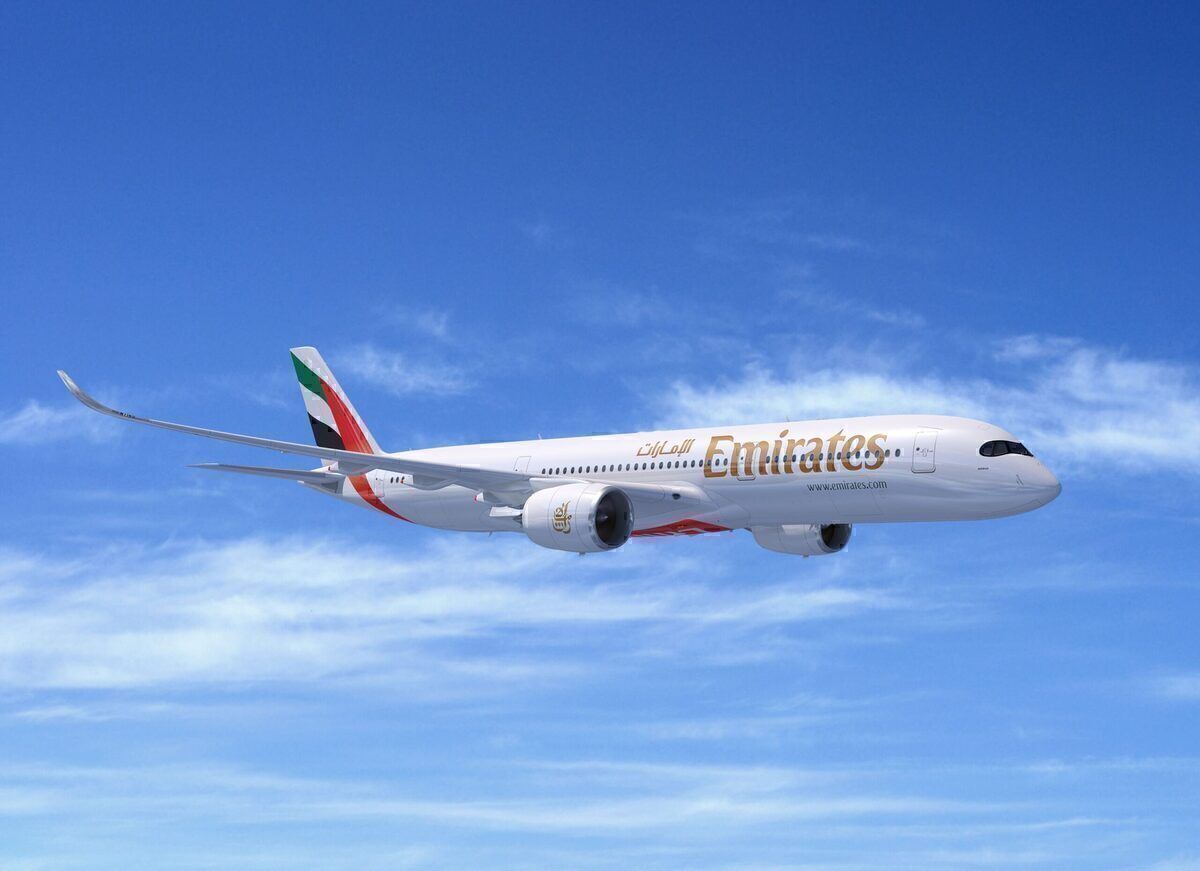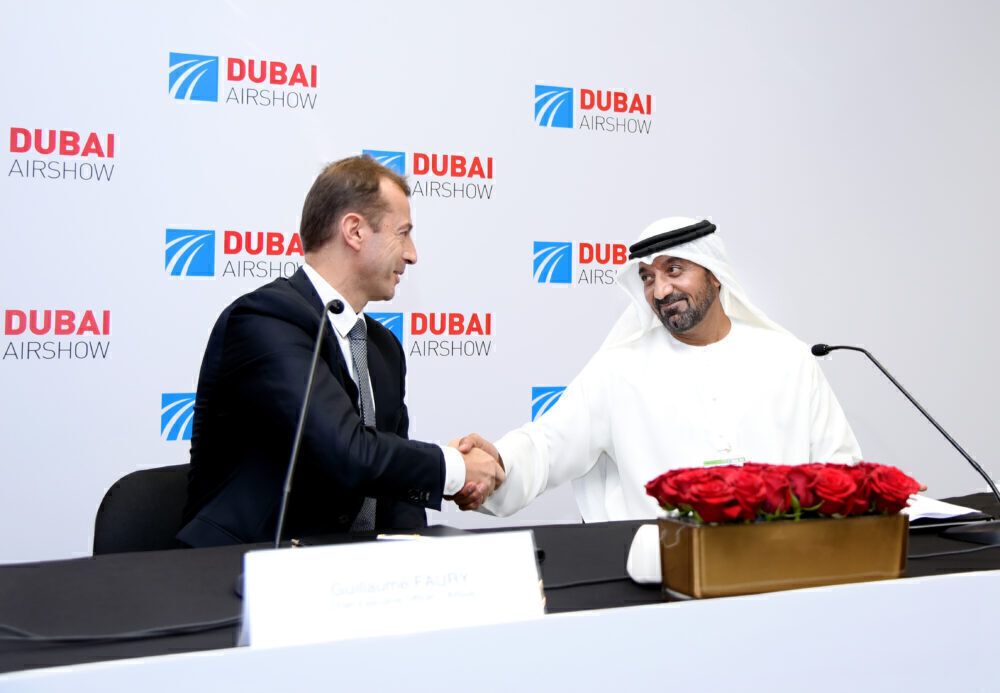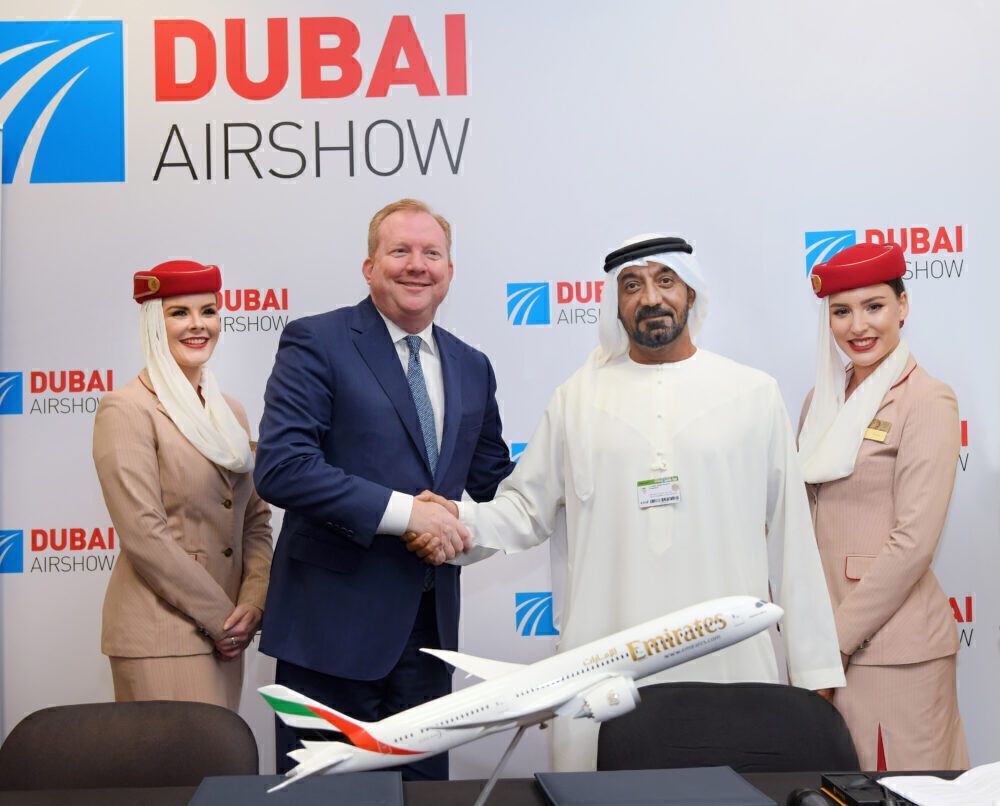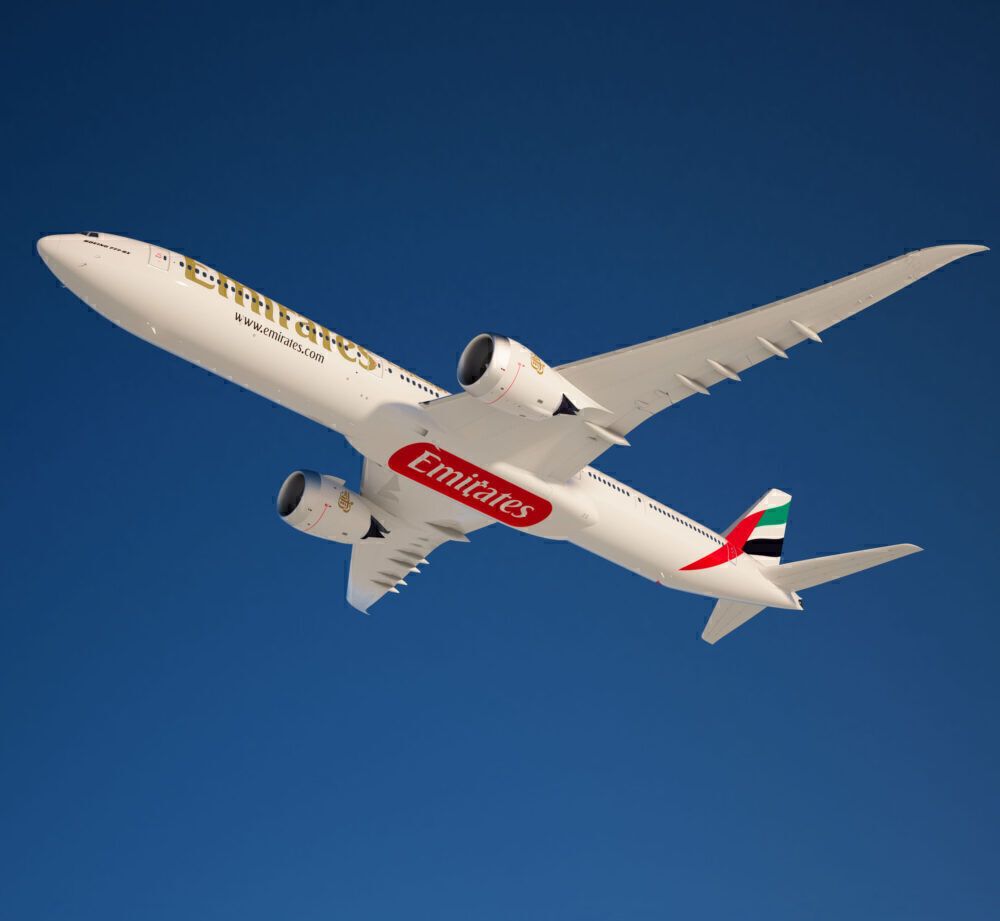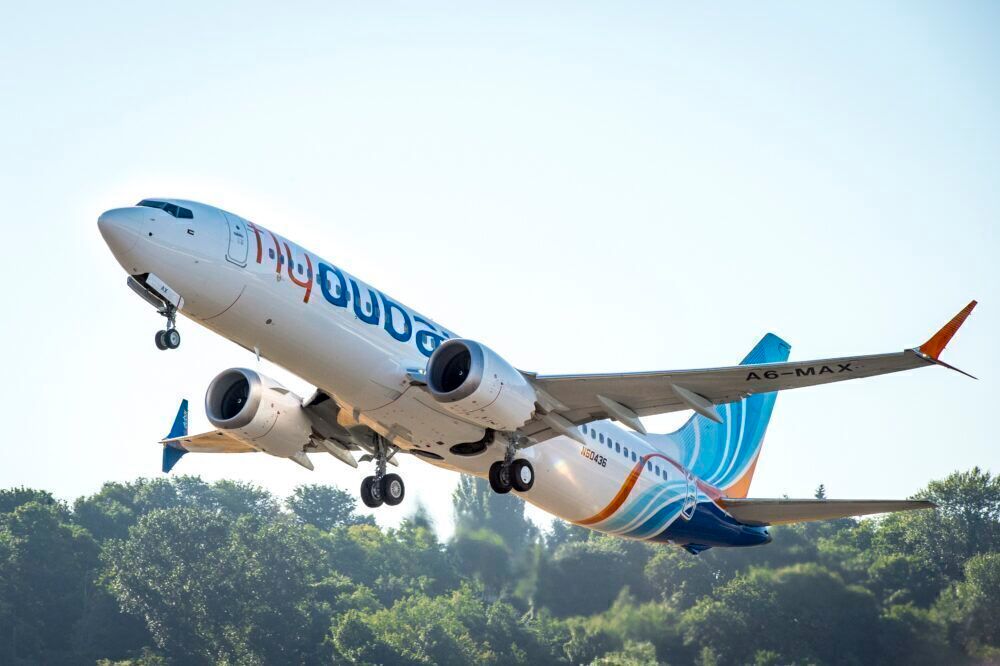Emirates has evolved into an airline synonymous with the biggest aircraft around. Flying a current fleet made up of only 777s and A380s, it has leveraged the hub and spoke model to the most significant degree for its growth. But there are some changes afoot and new aircraft in the pipeline. Let’s take a look at the aircraft Emirates will fly next.
The A350
Emirates has an order in with Airbus for 50 A350-900 aircraft. Deliveries of the type are planned to begin from 2023 onwards, with all 50 expected to arrive by 2028. That’s around 10 aircraft a year, suggesting the jets will arrive at a rate of just less than one per month.
Originally, Emirates had ordered some of the smaller A330neo aircraft. While the status of the order had been cloudy for some time, the Dubai Airshow agreement in 2019 confirmed that this would be scrapped in favor of a larger A350 order.
Speaking to Simple Flying last month, Tim Clark, Emirates president, noted that the new aircraft would not just be replacements for aging 777s and A380s. They would also be used to add capacity to existing, profitable services and to open new routes that can’t sustain the bigger aircraft.
While the A350 is roughly on a par with the 777 in terms of seat capacity, Emirates is also going somewhat smaller with its next new plane type.
Stay informed: Sign up for our daily and weekly aviation news digests.
The 787 Dreamliner
At the same Dubai Airshow in 2019, Emirates announced a full purchase agreement for 30 Boeing 787-9 Dreamliners. This new plane type is a smaller aircraft than Emirates has flown for some time, and is a key part of its strategy to continue its network expansion.
The 787s, while seating up to 420 passengers in an all-economy layout, are likely to receive some swish premium cabins. It’s not certain if Emirates will include a first class, but will certainly build in business class and likely its swanky new premium economy too. Taking Etihad’s Dreamliner as an example, this could result in a capacity of around 230 passengers or so.
This lower capacity, high-efficiency aircraft will allow Emirates to seek out new destinations that don’t have the traffic for its larger aircraft. Clark indicated that there are still many places the airline wishes to add to its network, particularly in Africa and Asia, and some unserved cities in Europe too.
The Dreamliners will begin delivering in 2023 and will take five years for the full quota to arrive. However, there is a rumor that more could be added to the order, as the airline’s dissatisfaction with the 777X program continues to play on its nerves.
The 777-9
Emirates remains the largest customer for the forthcoming Boeing 777-9. It originally ordered 150 777X back in 2013, but then swapped 24 of the type in favour of the 787. At present, its order book for the giant aircraft stands at 115, but the airline is not happy with the way things have been going.
Speaking to Simple Flying last month, Clark said that the program was in a ‘state of disarray', and that he had ‘no visibility' on when the deliveries would start. Delays to the 777X program have seen entry into service pushed back time and again. The Emirates boss now says he wouldn’t be surprised if the timeline slipped as far back as 2025.
Nevertheless, the airline remains a customer for the 777-9. The aircraft will almost certainly feature premium economy, and is likely to be a contender for a new first class product. For now, the delays to the 777X deliveries are earning Emirates’ oldest A380s a stay of execution, much to the disgust of its leadership.
What about narrowbodies?
A question on everyone’s lips is whether Emirates will ever fly narrowbodies. Since the onset of the pandemic, we’ve seen big changes to airline fleets and strategies. With Silk Air wound up, Boeing 737s have emerged wearing Singapore Airlines’ livery for the first time in almost 50 years. Could Emirates do the same?
The answer to this is, it’s very unlikely. The strategy at Emirates is to lean on the capabilities of its partner flydubai for narrowbody capacity, rather than diversifying the main fleet any further. Speaking at today’s World Aviation Festival, Clark said,
“We're trying to keep the brands separate but work much more closely together. There will be a much greater degree of network and fleet integration. Don't forget, if you take the A380 at the top, and you take the 737-8, -9 and -10, and 350s and the 787s and the 777-9s, you have an enormous range of tools in the toolbox, which allows you to operate to multiple points.”
For now, Emirates will remain a widebody-only airline, but we’re likely to see much closer cooperation with flydubai as it continues to receive deliveries of its new 737 MAX aircraft.
What do you think of Emirates’ future fleet plans? Let us know in the comments.

